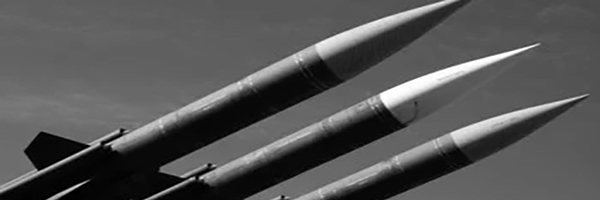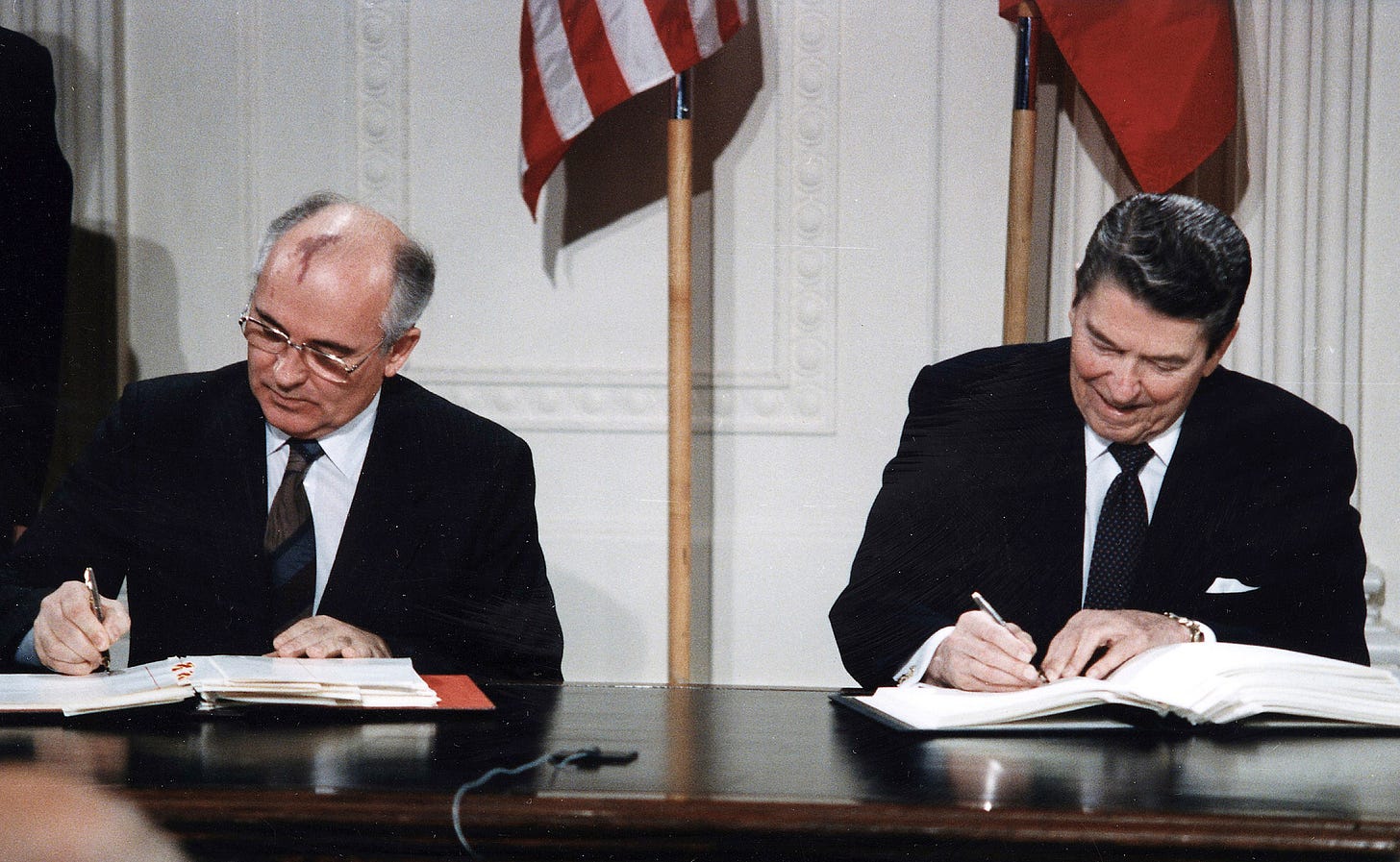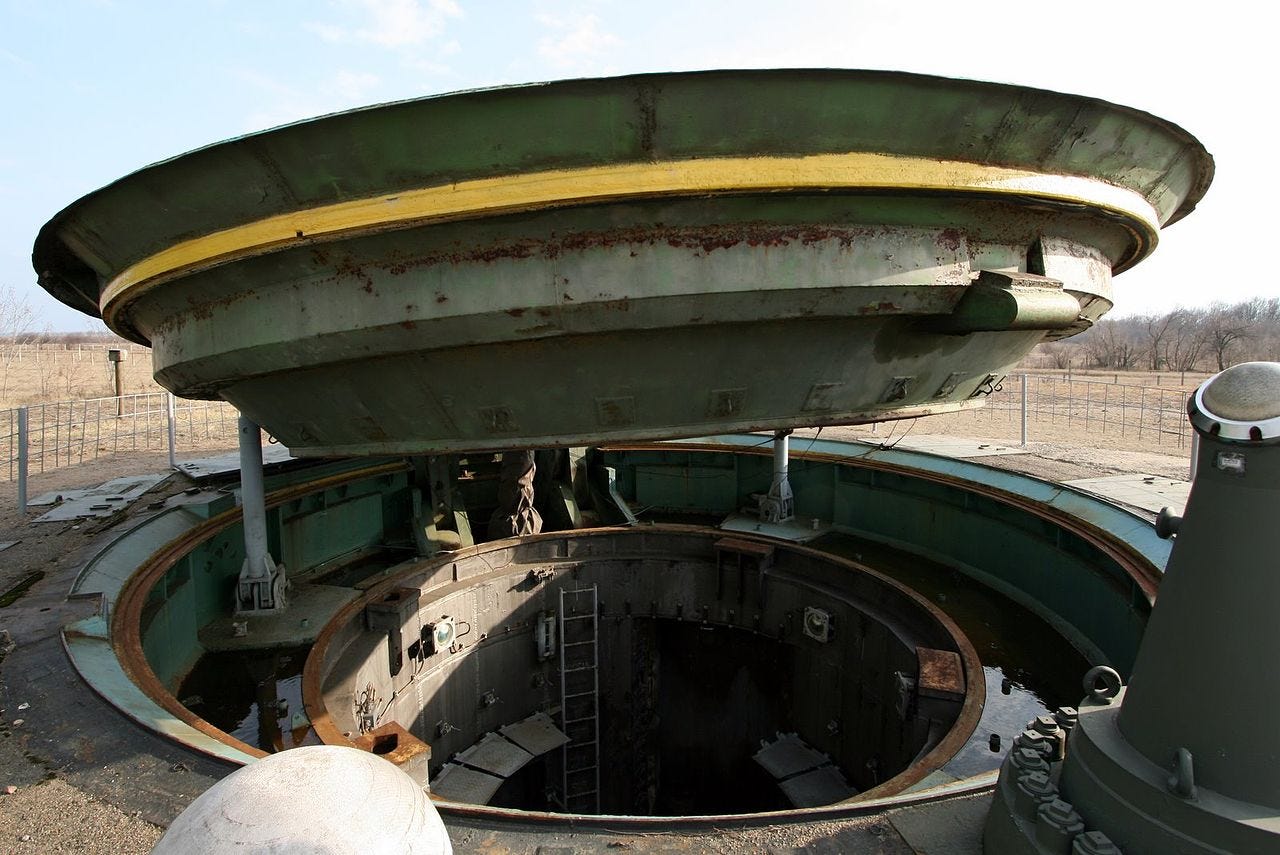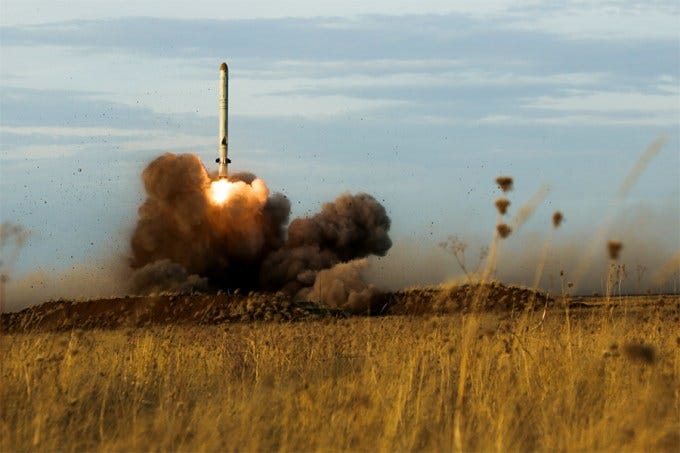The End Of The Arms Control Era

A Nuclear Age With No Restrictions
In his state of the union address on Tuesday, Russian President Vladimir Putin announced the suspension of the New START Treaty, which limits the number of deployed nuclear warheads. “The Defense Ministry and Rosatom must make everything ready for Russia to conduct nuclear tests. We will not be the first to proceed with these tests, but if the United States goes ahead with them, we will as well.” The suspension is not a termination, and the choice to suspend rather than withdraw opens up the possibility for future reinstatement.
What is most significant is this marks the end of the last remaining arms control treaty between Russia and the United States.
As it stands, there are no existing written agreements between the two largest nuclear powers to limit their arms build up, launch time, and magnitude of destruction.
Below is a brief overview of the advent and demise of arms control.
Before The Treaties
Ever since the first atom bombs were dropped on Japan there were discussions of arms control in the new age of atomic weapons. The Baruch Plan of 1946 was an attempt to get an international coalition to regulate atomic energy and its failure resulted in the first arms race between the U.S. and the Soviet Union. The Soviets obtaining the bomb in 1949 solidified the danger of the new rivalry.
We’ve come a long way from the “duck and cover drills” that were popular in the 50’s, where the fear was instilled in every child’s head as they all shot under their school desks at a moment’s notice in preparation for an atom bomb attack. That fear was not entirely unwarranted—the real threat of a nuclear war with Russia wasn’t just possible, it defined the cold war.
Mutually assured destruction was coined by Donald Brennan with the acronym M.A.D. to ironically describe the reality of complete annihilation by the attacker and defender in a nuclear war. But it wasn’t a joke—with the advent of ballistic missile submarines, it became a doctrine of our national security policy.1
As the Cuban Missile Crisis taught us, we could not sustain a world like this. It was only a matter of time, through malfeasance or ineptitude, that a geopolitical dispute would lead us to MAD. Before any treaties limiting the scope and scale of nuclear arms were implemented, it was the good faith of world leaders that had kept this possibility at bay.
The First Treaties
The first of these treaty negotiations began in the late 1960’s with what became the Anti-Ballistic Missile Treaty (ABM) under Nixon, which was put in place to limit the arms race build up by limiting air-defense systems. A build of of ABMs were seen to instigate an arms race to deter the effectiveness of the defenders missile interception systems by overwhelming them. Two ABM systems were allowed with 100 anti-ballistic missiles on each site.
In the 80’s, Reagan and Gorbachev both wanted to move beyond the policy of MAD. The Intermediate-Range Nuclear Forces Treaty (INF), which has been in negotiations for over a decade, was finally signed by the two leaders in 1987, banned all ballistic missiles, cruise missiles, and missile launchers with ranges of 500–1,000 kilometers (310–620 mi) (short medium-range) and 1,000–5,500 km (620–3,420 mi) (intermediate-range). This effectively eliminated the threat of nuclear attacks in Europe. Among the proposals for the INF Treaty was the phasing out of all nuclear weapons, which Gorbachev was ready to do. However, the negations outlined in the treaty as it existed were as far as Reagan was willing to go.2

President Reagan and General Secretary Gorbachev signing the INF Treaty in the East Room of the White House.
The Conventional Forces in Europe Treaty (CFE) signed in 1990 limited the amount of military equipment an alliance could build up on the continent. 20,000 tanks and 20,000 artillery pieces were allotted to each side, including how much military buildup was allowed on the “flanks” of nations. This treaty greatly weakened Russia with the breakup of the Warsaw Pact. A Soviet Era treaty, it underwent several modifications in the post-USSR period, including the former Soviet Republics and the “flank” rules.
Then, in a rare moment of clarity in post USSR relations, came the START Treaty in 1991 under the George H. Bush administration, which limited the number of ICBM’s to 1,600 and nuclear warheads to 6,000. Massive amounts of warheads and other weapons were destroyed, as well as years of mutual inspections between Russia and The United States.
Soon after START II, a treaty that banned the use of multiple independently targetable re-entry vehicles (MIRVs) on ICBMs was later negotiated, and even went as far as to be ratified by Russia. The treaty was conditional on the U.S. staying in the ABM treaty, and when Washington pulled out of that treaty on ABM, all START II negotiations were suspended.
In 1955 at the Geneva Conference, Dwight D. Eisenhower first suggested a treaty of non-combatant planes to fly over enemy territory to ensure trust through aerial surveillance flights. In 1992, George Bush Sr. successfully negotiated the Open Skies Treaty of which 34 countries signed. Finally, planes could fly over distant countries to ensure they were not building up arms and following international protocols.
USSR Breakup
The dissolution of the USSR saw the largest nuclear stockpile in the world fall into the hands of numerous republics overnight. 35,000 nuclear warheads were redistributed into countries like Belarus, Ukraine, Kazakhstan and other former Soviet Republics. “Perhaps the most astonishing fact about the past twenty years is something that did not happen” wrote Harvard professor Graham Allison. One by one, they were sent back to Russia, dismantled and decommissioned.
Ukraine, embroiled in war today, would have been the 3rd largest nuclear power if it were not for disarmament in the 1990s. The Clinton administration had convinced the leaders of Ukraine that nuclear weapons would not deter Russian aggression, but rather incentivize it. The prompt and complete denuclearization of Ukraine was completed in exchange for security promises.

Missile silo in the Central Ukraine for a SS-24 missile
But this time was not without it’s moments. January 25, 1995 saw a high altitude Norwegian missile exercise that was detected by the Russian Air defense system. The trajectory was on course for Moscow. Russian President Boris Yeltsin was handed a brief case with the nuclear codes in them and in a matter of minutes had to make a decision. If this test had been done with missiles from the INF treaty, the amount of time that Yeltsin would’ve had to make his decision would go from 30 minutes to about 5 minutes. In all likelihood, the INF treaty had saved the world from mutually assured destruction. Without arms control, it would be a world gone MAD.
The 2000s: Withdrawal and Suspension
The late 90’s had seen the deterioration of U.S.-Russia relations over conflicts in Chechnya, Bosnia and Kosovo, with a brief reprieve after the cooperation in military operations following the 9/11 attacks. But Bush’s war on terror and the fear of another attack caused him to suspend the ABM treaty in 2001, deeming it unnecessary in the post-USSR age and defending that anti-ballistic missile systems were necessary “to protect our people from future terrorist or rogue state missile attacks.”3
Anti-ballistic missile defense was never fully functional, intercepting 11 out of 19 missiles in a recent test.4
They cost hundreds of billions of dollars to maintain and suffer from program management issues.5,6
As writer James M Acton states: “No U.S. test has ever involved a target missile traveling at the speed necessary to reach the lower 48 states from North Korea. No test ever has involved a salvo of two or more incoming ICBMs or has appeared to have included realistic countermeasures, such as decoys shaped like real warheads.”7
In recent years, Russia and China have introduced a range of new ICBMs that are designed to counter U.S. missile defense systems. Putin has stated that these items are a response to the U.S. pulling out of the ABM treaty.
The Conventional Forces In Europe Treaty went through several reformations in the 90’s to accommodate for the collapse of the Warsaw Pact in Eastern Europe and the balance of alliances. In 2007, the U.S. established military bases in Romania and Bulgaria which Moscow claimed was a breach of the treaty. NATO disputed this claim by stating the U.S. bases were not permanent. However, the Washington Times confirmed from a senior U.S. official the agreement allowed for permanent bases.8
The U.S. still has military bases there to this day. Russia formally withdrew from the treaty in 2014.
The “Russian Reset” that the Obama Administration employed with Russia was a geostrategic policy intended to ease tensions between Russia and the international community following the 2008 Russo-Georgian War. During this time, they negotiated the New START treaty, which calls for halving the amount of nuclear missile launchers. The Russian Reset was short lived, and tensions soon reignited with the Maidan Coup and the annexation of Crimea by the Russian Federation in 2014.
Post-Maidan Uprising
During Trump’s first few years in office, his administration was attacked with constant Kremlin collusion allegations. The administration responded with a heavier hand to look tough towards Russia, often hastily and irrational. Arms control treaties were collateral damage of that campaign.
In 2018, the U.S. State Department released a report that Russia was violating the INF treaty with their SSC-8 missile. Russia responded by re-asserting that the missile was within compliance standards of the New START. They went on to strike back at the U.S., claiming that the European missile defense launch system could be used to fire cruise missiles in violation of the treaty.9
Trump responded by abruptly withdrawing from the treaty, much to the surprise of other NATO countries.

Test launch of the Russian SCC-8 Missile, accused of violating the INF Treaty
The Open Skies Treaty, while negotiated in 1992, did not go into effect until 2002. In August of that year, the first Russian planes would fly over the U.S. in accordance with the treaty. U.S. planes flew over Russia later that year. But the international community would soon place a double standard on Russia. In 2006, Latvia suspended flights over it’s territory for one month for NATO ministers visiting the country. In April of 2008, several religious holidays lined up to create a shortage of hotels for visiting groups and Russia asked for a one-week delay in overhead flights. The U.S. accused Russia of violating the terms of the treaty, while Latvia received no such condemnation.
In 2017, a Russian plane flew over Washington DC, and this was too much for the legislators in Washington to swallow. The Defense Appropriation Law of 2018 banned the use of public funds for the Open Skies Program unless the president certified that Russia has complied with all American wishes regarding the treaty. Congress had given Trump a choice: concede with letting the treaty expire or look more like he’s cozying up to Russia. In May of 2020 Trump gave the required 6 months notice to withdraw. Putin soon followed suit. Russia formally withdrew from the treaty in December of 2021.
The End of the Arms Control Era:
The final nail in the coffin for the arms control era took place this week with NATO demanding that Russia return to the implementation of the New START Treaty with inspections of their nuclear defense facilities. Inspections have been paused since 2020 from COVID-19, but with the request to return Putin responded “It is a kind of theatre of the absurd…we know that the West is directly involved in the Kiev regime’s attempts to strike at our strategic aviation bases….and now they want to inspect our defense facilities? In the current conditions of confrontation, it simply sounds insane.”
Putin suspending the New START with no end to the proxy war in Ukraine in sight marks the end of the arms control era, or at least, this era. Not only are there no limiting treaties, there are no talks happening between Russia and the United States. Secretary of State Anthony Blinken has had only one documented meeting with Russian Foreign Minister Sergey Lavrov since the start of the Russian invasion last February, and that meeting was over a prisoner exchange.
John Kennedy phoning with Nikita Khrushchev during those fateful days in 1962 saved us. Ronald Reagan’s relationship with Mikhail Gorbachev negotiated the end of the Soviet Union and the historic nuclear arms control treaties that led us into the post-USSR era. Bill Clinton’s relationship with Boris Yeltsin allowed for the dismemberment of the thousands of nuclear weapons that were left in the former Soviet Republics after it’s collapse.
But today, there are no consistent lines of communication between Russia and the United States, and no arms control treaties.
Thus ends the arms control era.
_______
Notes
1. http://www.nuclearfiles.org/menu/key-issues/nuclear-weapons/history/cold-war/strategy/strategy-mutual-assured-destruction.htm
2. https://www.theatlantic.com/politics/archive/2016/01/ronald-reagans-disarmament-dream/422244/
3. https://georgewbush-whitehouse.archives.gov/news/releases/2001/12/20011213-4.html
4. https://carnegieendowment.org/2021/12/13/u.s.-exit-from-anti-ballistic-missile-treaty-has-fueled-new-arms-race-pub-85977
5. https://www.cbo.gov/system/files/2021-01/56949-MissileDefenseReview.pdf
6. https://www.gao.gov/assets/gao-21-314.pdf
7. No. 4
8. https://www.washingtontimes.com/news/2006/apr/24/20060424-121528-1841r/
9. https://www.armscontrol.org/factsheets/INFtreaty
